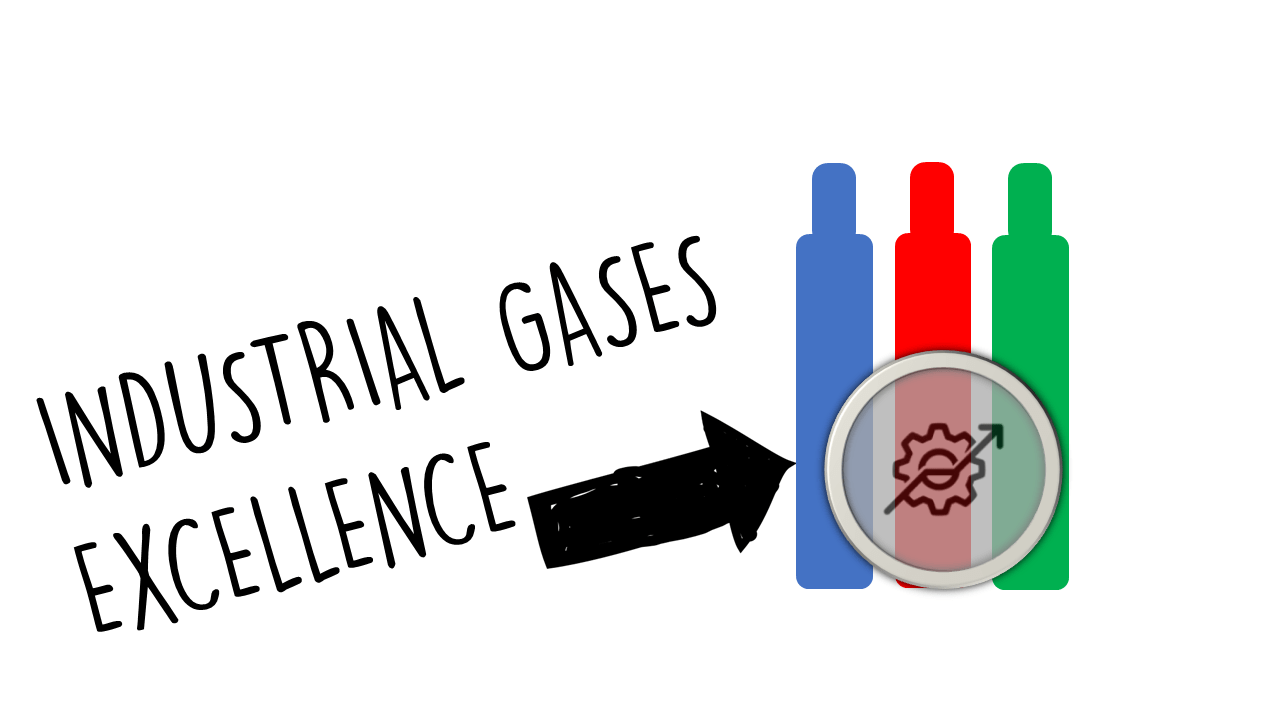Guaranteed availability of industrial gases is crucial for the smooth operation of myriad industries, from healthcare to manufacturing.
In sectors where precision and reliability are paramount, ensuring that gases such as oxygen, nitrogen, argon, argon mixtures, and carbon dioxide are readily available can significantly impact productivity and safety.
The framing and re-framing of strategies surrounding availability can enable companies to respond dynamically to customer needs, mitigate risks associated with supply chain disruptions, and foster stronger relationships with clients. This document outlines the concepts of framing and re-framing, specific actions to take, and relevant case studies.
Framing and Re-Framing
Framing: The Importance of Guaranteed Availability
- Business Continuity: Highlight how guaranteed availability of gases is crucial for maintaining business operations, especially in critical industries such as healthcare, food and beverage, and electronics manufacturing.
- Risk Mitigation: Frame availability as a strategy to mitigate risks related to production delays, compliance with safety standards, and market competitiveness.
- Customer Commitment: Position the guarantee of availability as a commitment to customer success, enhancing trust and loyalty.
Re-framing: Innovative Approaches to Ensure Availability
- Proactive Inventory Management: Re-frame availability from merely having stock to actively managing inventory based on predictive analytics, customer usage patterns, and seasonal demand fluctuations.
- Resilient Supply Chains: Shift focus to creating flexible and resilient supply chains that can adapt quickly to changes in demand or supply disruptions.
- Collaborative Partnerships: Emphasize co-creating solutions with customers that ensure their specific availability requirements are met consistently, enhancing the overall value proposition.
Action Steps
Advanced Demand Forecasting
- Implement advanced analytics and AI-driven tools to forecast demand accurately. This can include analyzing historical consumption patterns, seasonal trends, and upcoming industry shifts.
Diversified Supply Chain Strategy
- Develop a diverse supplier base to ensure access to raw materials and gases. Consider partnerships with multiple suppliers or establishing regional hubs to reduce dependency on a single source.
Safety Stock and Buffer Inventory
- Establish safety stock levels for critical gases to buffer against demand spikes or supply disruptions. Ensure regular reviews and adjustments based on updated forecasts.
Real-Time Inventory Monitoring
- Use IoT devices for real-time tracking of inventory levels, enabling instant alerts when stock reaches critically low levels, thus ensuring timely replenishment.
Customer Collaboration Programs
- Develop programs to work closely with key customers, including customized inventory agreements, shared forecasting initiatives, and collaborative logistics planning.
Case Studies
Case Study 1: Air Products and Chemicals, Inc.
Background: Air Products implemented an advanced analytics system to enhance its gas availability for key industries such as healthcare.
Implementation:
- Deployed predictive analytics tools to anticipate demand surges, particularly during pandemics or seasonal fluctuations.
- Established regional inventories of essential gases, ensuring that they could meet increased demand quickly.
Outcomes:
- Achieved a 95% fulfillment rate for customers during critical periods, enhancing customer trust and significantly increasing client retention.
Case Study2: Linde – Optimized Supply Chain Management
Background: Linde focused on developing a more resilient supply chain to guarantee the availability of gases across diverse markets.
Implementation:
- Established multiple production facilities and regional supply centers, allowing for quick distribution and lower transportation costs.
- Created flexible contracts with suppliers, allowing adjustments based on real-time demand insights.
Outcomes:
- Improved response times in meeting customer gas requirements, leading to a 20% decrease in stock-out incidents and a boost in customer satisfaction ratings.
Case Study 3: Praxair – Customer Collaboration
Background: Praxair recognized the importance of collaborating with customers to better understand their gas requirements.
Implementation:
- Introduced a customer-centric program where key clients could provide input on their expected gas usage, leading to tailored supply solutions.
- Partnered with clients in sectors such as food and beverage to develop just-in-time delivery systems adapted to their production schedules.
Outcomes:
- Enhanced availability of gases resulted in an increase in customer loyalty and a measurable increase in sales volume from repeat customers.
Conclusion
The guaranteed availability of industrial gases is fundamental to supporting the operational needs of various industries.
By framing the need for availability within the context of business continuity and customer commitment, and re-framing strategies towards proactive inventory management, resilient supply chains, and collaborative partnerships, companies can elevate their service offerings.
The actionable steps outlined provide a clear pathway for organizations to enhance their capabilities, while the case studies serve as practical illustrations of successful implementations.
Ultimately, focusing on guaranteed availability will not only enhance customer satisfaction but also strengthen market positioning and industry trust.




